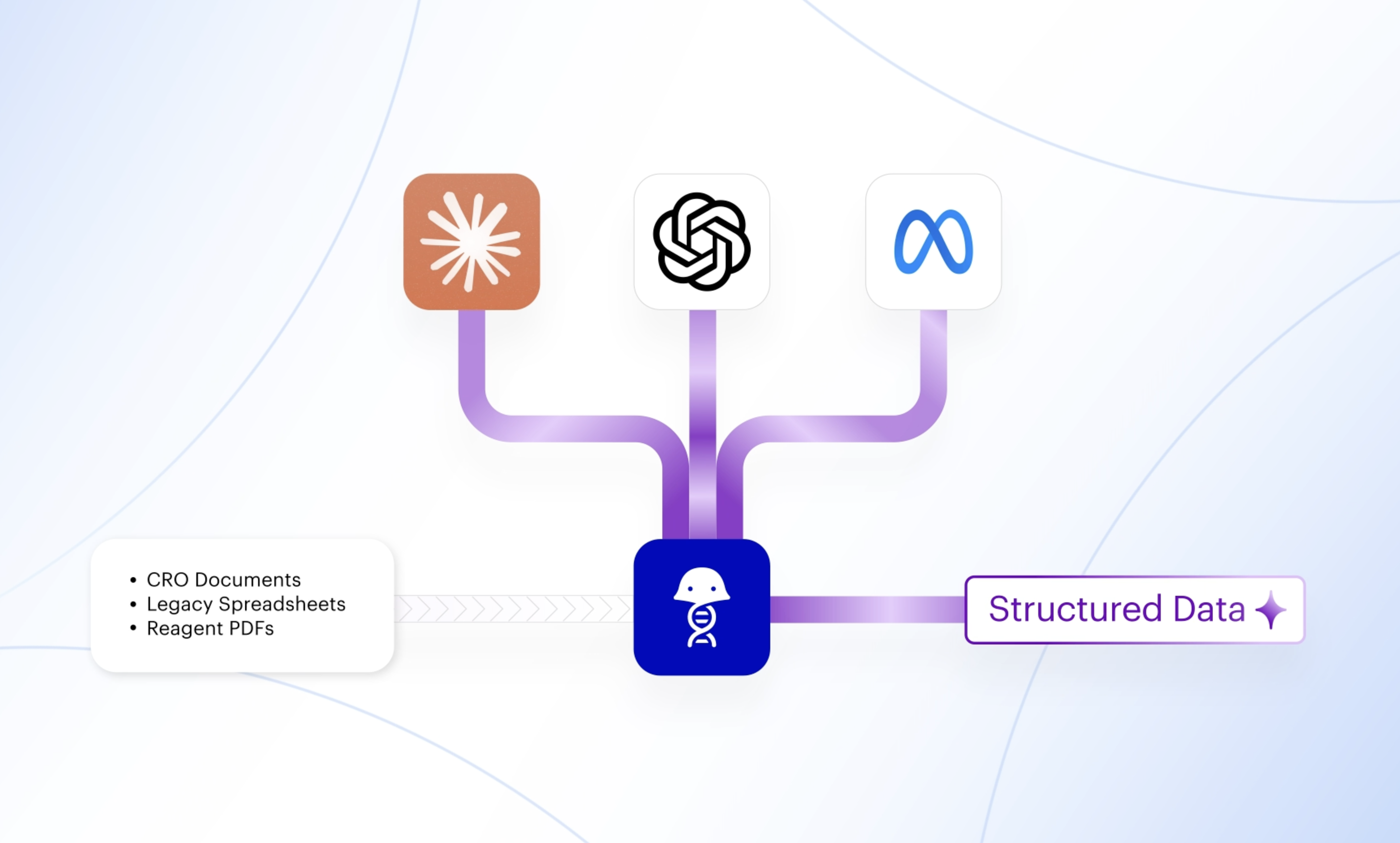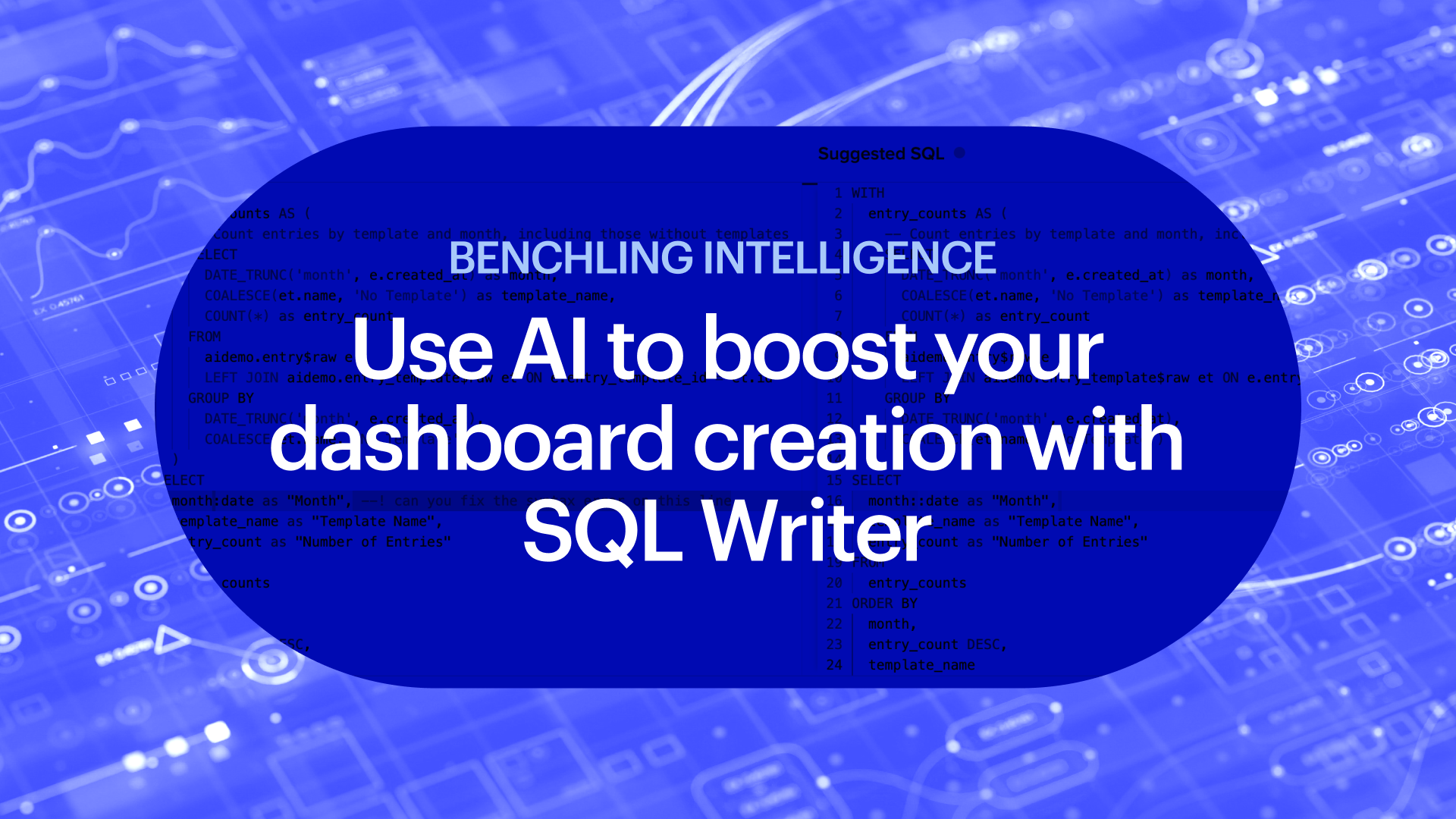Deep Research is coming to Benchling
What if all of your experimental data combined with the world’s scientific literature could answer your next question in seconds?
A CSO at a gene editing biotech told us recently that his team has spent tens of millions on animal studies. And yet, when they try to answer questions — like how editing efficiency affects gene expression or toxicity across animal models — the data is barely usable.
To get insights, his head of preclinical research spends weeks digging through CRO reports, lab notebooks, and scattered slide decks. In an era where AI can draft clinical study reports in minutes, why are brilliant scientists still piecing together answers by hand?
Benchling is building a Deep Research agent to change that. Inspired by recent breakthroughs in research agents from leading AI labs, we're bringing these capabilities to biotech, purpose-built for the complexity of scientific data.
Deep Research won’t just speed up R&D. It will increase the surface area for discovery. Scientists ask better questions when answers are easier to find. Our agent simplifies work that takes days to weeks today:
Search structured and unstructured data across experiments in Benchling — pulling together quantitative (on-target editing percentages) and qualitative (“mild immune response in the 0.5mg/kg group on Day 14”) data
Extracting information buried in technical reports and other documents — going outside Benchling to find CRO study PDFs, milestone review decks (“final_final_v3_APPROVED”), and more
Combining private data with public literature, including the underlying methods — not just “cells transfected with standard protocols” but the exact transfection reagent, confluence, and recovery time
Producing analyses to support decisions about what to try next — from flagging a trend in biomarker response to identifying a reagent that could boost expression
Deep Research serves as your organization’s institutional memory — synthesizing years of knowledge that is in Benchling and outside it. By also connecting into public data, it transforms from a research assistant into a co-scientist that can challenge your findings and generate new ideas, grounded in all of the experimental work that’s come before.
Deep Research, purpose-built for science
The complexity and nuance of scientific questions requires an approach purpose-built for science. Consider how FutureHouse’s PaperQA2, an agent for literature search, outperformed Perplexity and ChatGPT by using advanced techniques to drill into details that might be buried in a figure caption or table.
We’ve spent the last decade building the modern platform for scientific data. Data doesn’t need to be perfectly structured for an AI agent, but it also can’t be stuck in legacy tools with no APIs. Our agent searches and reasons over the structured data you have in Benchling (assay results, molecules, and more) and unstructured context hidden deep in lab notebooks.
The agent also needs to retrieve information locked away in lengthy study reports from collaborators and internal program documents. Our data entry assistant helps structure data from these unstructured places. But even just basic tagging with Benchling’s metadata (“relates to compound X”) greatly aids the agent in retrieving the right data.
Deep Research is the place to start, but what happens after scientists get rapid answers to their questions? They form hypotheses on what to try next.
Generating hypotheses
Much of the conversation around hypothesis generation focuses on AI solving grand challenges, like selecting the next blockbuster target. That ambition is important, but it overlooks a more immediate opportunity.
Every day, scientists make small but critical micro-hypotheses: which reagent to try, which protocol step to tweak, which conditions to test. Thousands of these decisions drive breakthroughs, but the data to inform them is often scattered or invisible.
This is especially true for public data. Papers showcase polished results but not the experimental details scientists need to wrestle with. That’s precisely the messy, real-world data tracked in Benchling. And when papers disagree, those contradictions aren’t dead ends — they’re signals. The right context, often buried in notebook entries on Benchling, can explain the divergence and suggest the next idea to test.
An agent that generates ideas needs to first be grounded in your experimental history. But it builds toward a co-scientist that is a partner in not just coming up with ideas, but also in making those ideas successful in the lab.
Get access
We have always developed our product in close collaboration with scientists. So many of our customers have asked for Deep Research — we’ve been building and we want your input. Read about Deep Research on our Help Center for more information about how to give it a try.
Every breakthrough begins with asking the right question. Our mission with Deep Research is to not just save time but fuel the curiosity that drives science forward. Learn more about Benchling AI.
Powering breakthroughs for over 1,300 biotechnology companies, from startups to Fortune 500s



